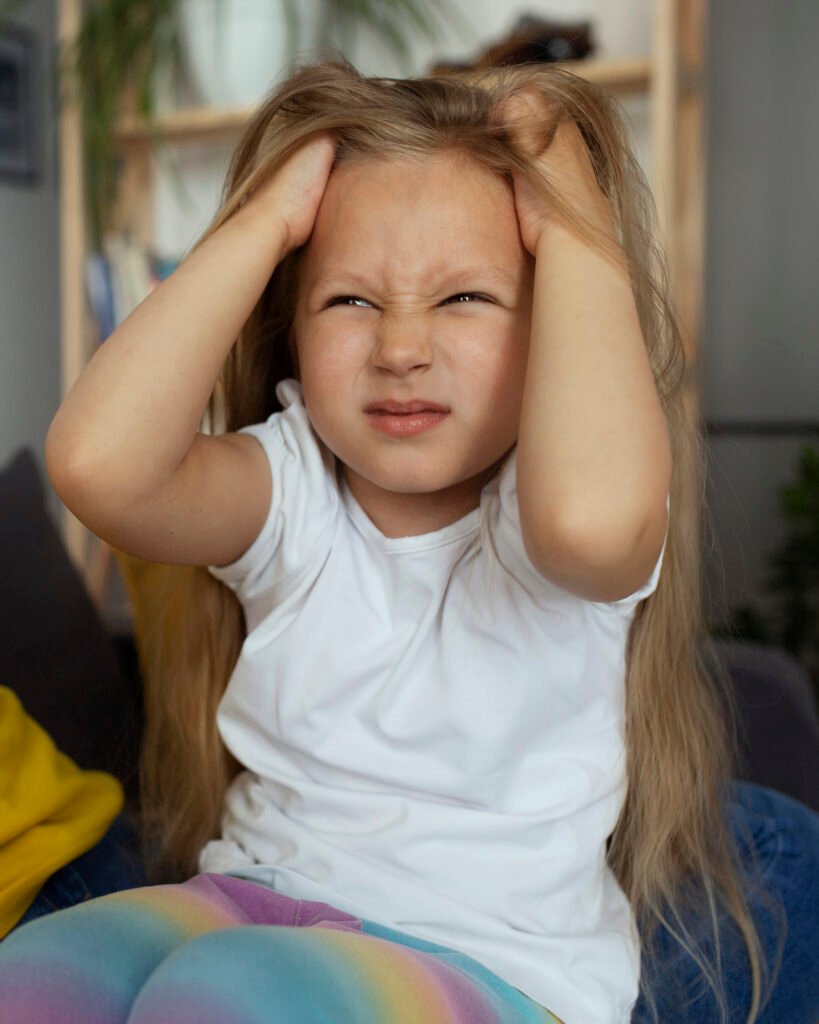Anxiety in children is more than just the typical jitters before a test or a big game. When a child’s worry becomes so overwhelming that it disrupts their daily life, it can be a sign of an anxiety disorder. This condition is a real and common psychiatric challenge that affects a significant number of young people, impacting their school performance, social life, and overall well-being.
As we see in many practices, including those in Beverly Hills, understanding and addressing this issue is crucial.
Recognizing the Signs
Anxiety in children can manifest in both physical and behavioral ways. It is important for parents and caregivers to recognize these signs as they are often more than simple mood swings or irritability.
| Physical Symptoms | Behavioral Signs |
| Frequent headaches or stomachaches | Social isolation or avoidance of activities they once enjoyed |
| A racing heart | Irrational fears or persistent worry about unlikely catastrophes |
| Fatigue | Hyper-vigilance |
| Restlessness or inability to sit still | Worsening school performance or difficulty concentrating |
| Nausea | Sleep disturbances |
Understanding the Causes
The causes of Anxiety in children are often complex and can be attributed to several factors, including:
- Genetics and Brain Chemistry: Some children may have a biological predisposition to anxiety.
- Ongoing Stress: Stress from school, family issues, or bullying can contribute to a child’s anxiety.
- Traumatic Experiences: Major life changes or traumatic events can be a significant trigger.
The high-paced life, whether in Beverly Hills or elsewhere, can contribute to these stressors.

Types of Anxiety Disorders
Anxiety in children is not one-size-fits-all. Some of the common types include:
| Disorder Type | Description |
| Generalized Anxiety Disorder (GAD) | Characterized by excessive, uncontrollable worry about various events or activities. |
| Social Anxiety Disorder | Intense fear of social situations and being judged by others. |
| Separation Anxiety Disorder | Extreme distress when away from a parent or caregiver. |
| Specific Phobias | An intense, irrational fear of a particular object or situation. |
| Selective Mutism | A consistent failure to speak in specific social situations where there is an expectation to speak. |
Treatment and Coping Strategies
Thankfully, pediatric anxiety is highly treatable. An integrative approach that may combine therapy, holistic strategies, and sometimes medication is often the most effective.
Anxiety in children can be managed with the right tools and support. Many professionals in the Beverly Hills area specialize in these advanced therapeutic methods.
Therapeutic Interventions
- Cognitive Behavioral Therapy (CBT): Helps children identify and change negative thought patterns.
- Exposure and Response Prevention (ERP): Gradually exposes children to their fears in a safe, controlled environment.
- Child-Centered Play Therapy: Uses play to help children express and process their feelings.
Coping Strategies
- Increased Physical Activity: Regular exercise can help reduce stress.
- Mindfulness and Relaxation: Practices like meditation and deep breathing can calm the nervous system.
It is also vital for parents to be educated on how to support their anxious child while also managing their own well-being. With the right support and tools, children can learn to manage their anxiety and live a full, happy life. The management of Anxiety in children is crucial for their long-term health. Finding the right specialist in Beverly Hills can be a great first step.
Frequently Asked Questions
Normal worry is temporary and often tied to a specific event (like a test). An anxiety disorder involves overwhelming worry that is persistent, often irrational, and disrupts a child’s normal daily functioning.
Physical symptoms can include stomachaches, headaches, fatigue, restlessness, and a racing heart.
Common behavioral signs are social isolation, irrational fears, difficulty concentrating, and sleep disturbances.
Causes can include a genetic predisposition, brain chemistry imbalances, ongoing stress from school or bullying, and traumatic experiences.
The first step is to seek a professional diagnosis from a qualified healthcare provider, such as a pediatrician or a child psychiatrist.
CBT is a type of talk therapy that helps children identify and change negative thought patterns and behaviors that contribute to their anxiety.
Parents can support their child by being understanding, educating themselves about the condition, and participating in family therapy or parent education sessions as recommended by a professional.
Yes, in some cases, medication may be prescribed by a doctor to help manage symptoms, often in conjunction with therapy.
Yes, simple strategies like deep breathing exercises, regular physical activity, and mindfulness techniques can help a child manage anxious feelings.
While some mild anxiety may improve with time, diagnosed anxiety disorders often require professional intervention to manage effectively. They are not something a child can simply “grow out of.”
Seeking Professional Help
Understanding pediatric anxiety is the first step toward helping your child. If you’ve recognized these signs in your child, remember that you are not alone, and effective help is available. Early intervention is key to ensuring your child learns the skills they need to lead a healthy and fulfilling life.
Ready to take the next step? Contact Us Today to schedule a consultation and discuss a personalized treatment plan for your child.